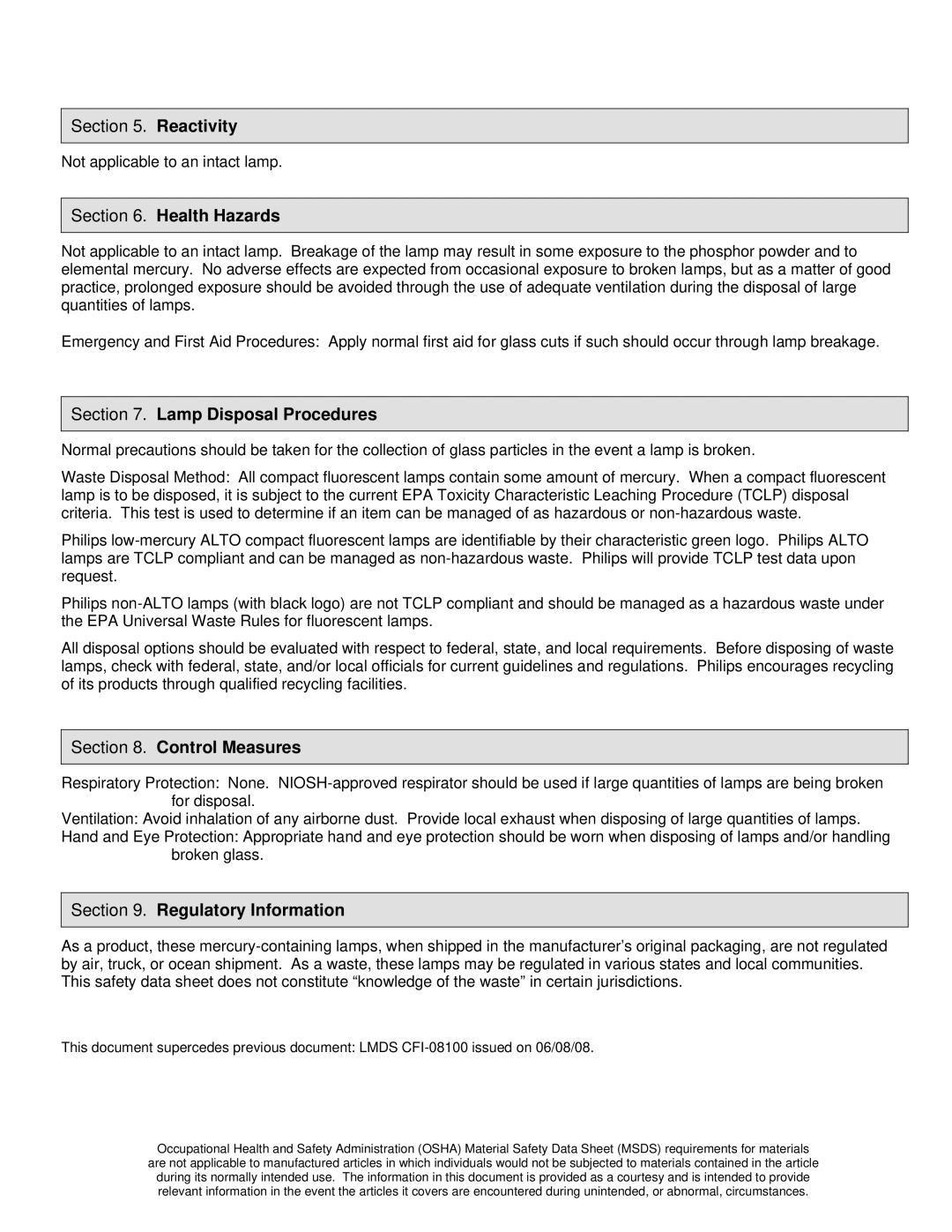CFI-08100A, CFI-08100 specifications
Philips CFI-08100 and CFI-08100A are prominent offerings from Philips in the domain of advanced lighting solutions. These models represent a blend of cutting-edge technology and innovative design, specifically tailored to meet the diverse needs of commercial and industrial applications.One of the key features of the CFI-08100 series is its exceptional energy efficiency. Utilizing advanced LED technology, these lights consume significantly less power compared to traditional lighting solutions while providing superior illumination. The enhanced energy savings not only lead to reduced operational costs but also contribute to environmental sustainability, making them an ideal choice for businesses looking to reduce their carbon footprint.
Another notable characteristic of the Philips CFI-08100 and CFI-08100A is their impressive lumen output. With the ability to produce bright and uniform lighting, these fixtures are perfect for large spaces such as warehouses, factories, and retail locations. The light distribution is meticulously engineered to minimize shadows and enhance visibility, thereby improving safety and productivity in the workplace.
In terms of durability, both models are built to withstand harsh conditions. The robust construction ensures longevity, even in demanding environments. They are resistant to impact and have excellent thermal management, which prevents overheating and extends the lifespan of the fixtures. This makes them highly reliable, reducing the need for frequent replacements and maintenance.
The CFI-08100 series also boasts versatile installation options. They can be easily mounted on ceilings or walls, allowing for flexibility in both design and functionality. Additionally, these models feature a sleek and modern aesthetic, allowing them to blend seamlessly into various architectural settings.
With smart lighting capabilities, the CFI-08100A takes innovation a step further. It supports connectivity options that enable integration with smart building systems, allowing users to control lighting based on occupancy or daylight availability. This not only enhances user comfort but also further optimizes energy usage.
In summary, the Philips CFI-08100 and CFI-08100A are remarkable lighting solutions characterized by energy efficiency, high lumen output, durability, and modern design. Suitable for a range of commercial applications, these fixtures exemplify Philips' commitment to delivering advanced lighting solutions that meet the evolving needs of businesses while promoting sustainability and efficiency.

